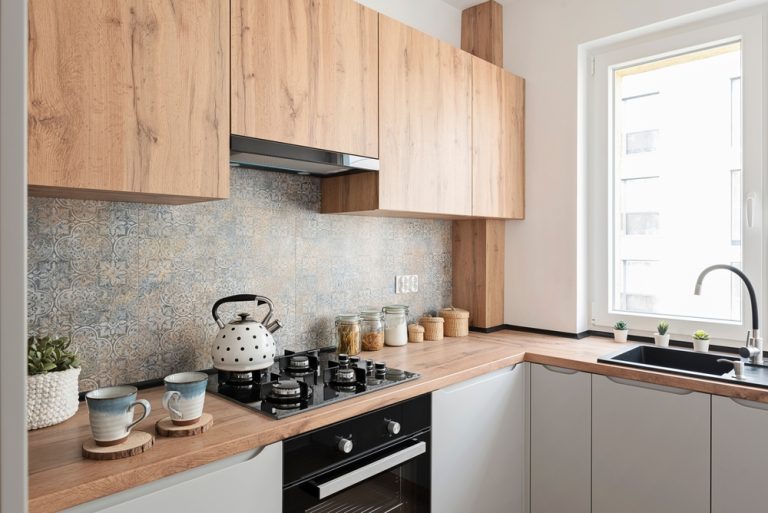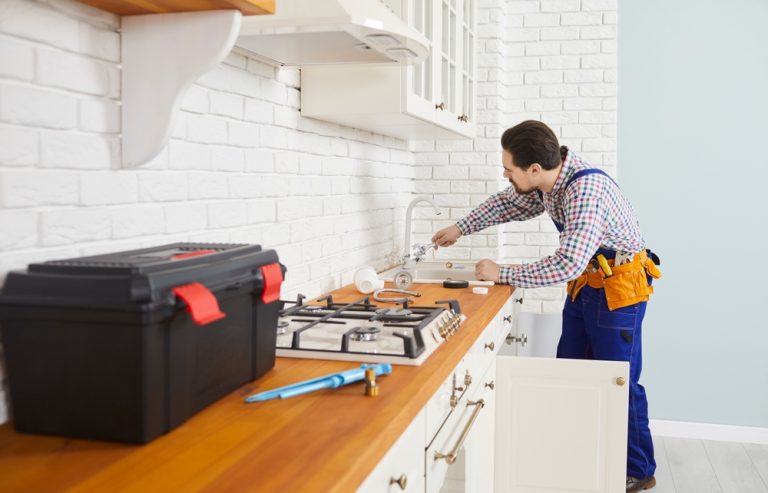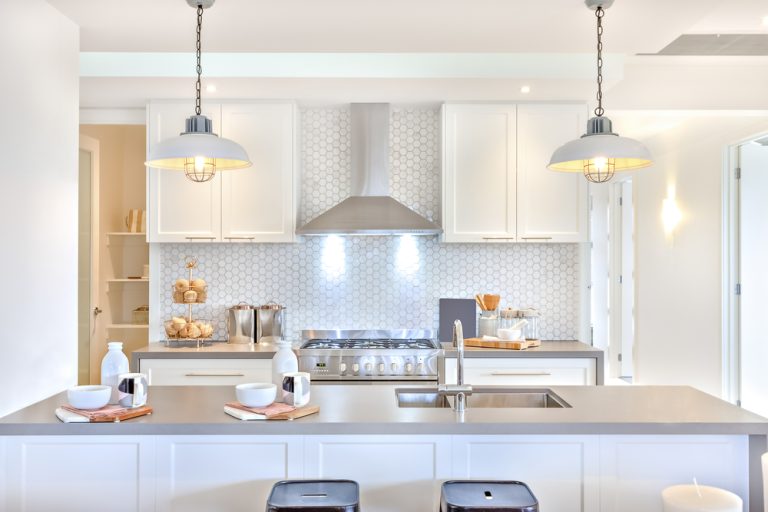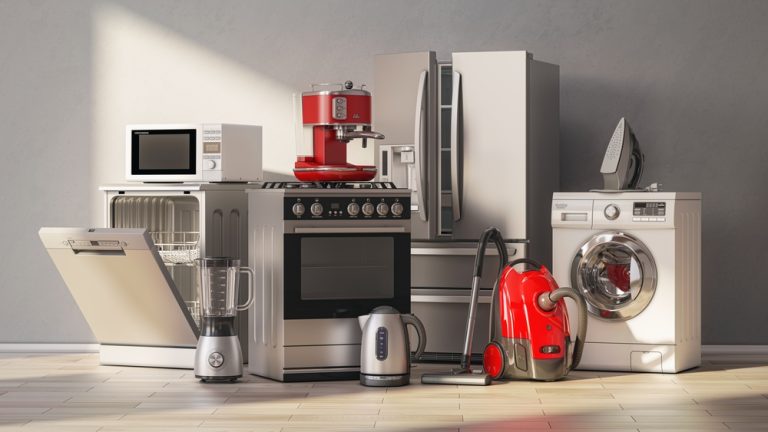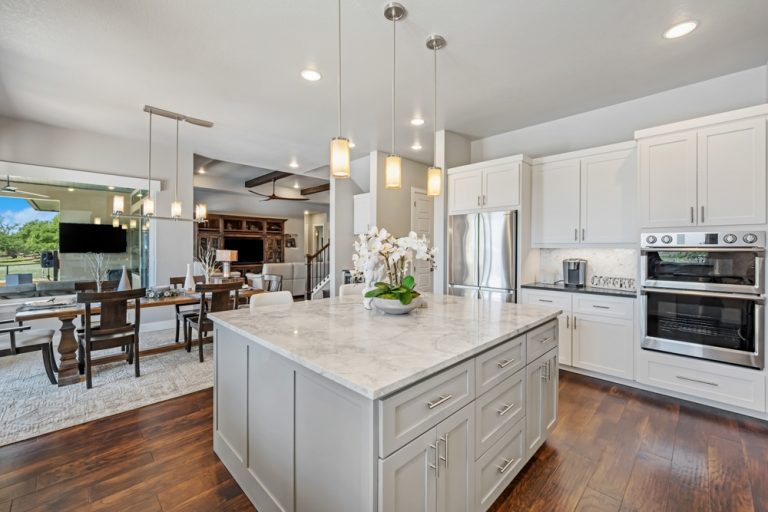How Long Do Kitchen Cabinets Last?
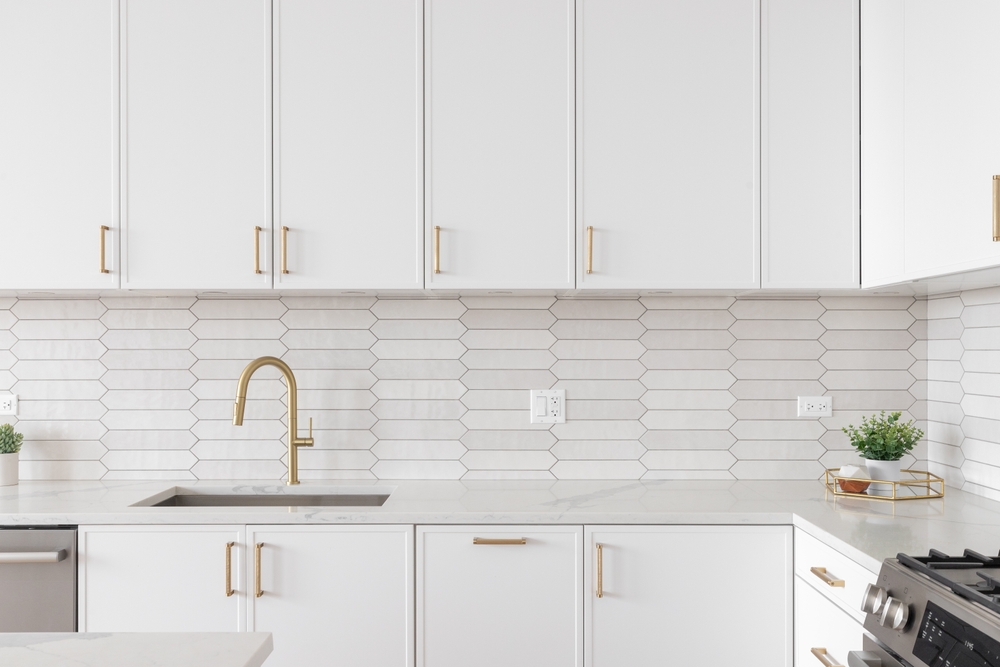
Kitchen cabinets are a major investment and play a significant role in the overall functionality and aesthetics of your kitchen. Given their importance, one of the most common questions homeowners ask is, “How long do kitchen cabinets last?” The lifespan of kitchen cabinets can vary widely depending on factors like the quality of materials, the level of maintenance, and the amount of daily use they endure. Understanding the expected lifespan of your kitchen cabinets can help you make informed decisions about when to repair, refinish, or replace them.
In this blog, we’ll explore the factors that influence the longevity of kitchen cabinets, the average lifespan of different types of cabinets, and tips on how to extend their life.
Factors Affecting the Lifespan of Kitchen Cabinets
The lifespan of kitchen cabinets depends on several key factors, each of which can significantly impact how long your cabinets will last.
Quality of Materials
- Solid Wood: Cabinets made from solid wood are typically the most durable and long-lasting. High-quality hardwoods like oak, maple, and cherry can withstand years of use and are more resistant to wear and tear.
- Plywood: Plywood cabinets are a step down from solid wood but are still considered durable, especially when made from high-grade plywood. They offer a good balance between cost and longevity.
- Particleboard/MDF: Cabinets made from particleboard or medium-density fiberboard (MDF) are less expensive but also less durable. These materials are more prone to damage from moisture and heavy use, which can shorten their lifespan.
Construction Quality
- Joinery: The type of joinery used in cabinet construction affects durability. Dovetail joints, for example, are stronger and more durable than simple glued joints or staples.
- Hinges and Hardware: The quality of the hinges, drawer slides, and other hardware also plays a role in how long cabinets last. High-quality hardware can keep doors and drawers functioning smoothly for many years.
Environmental Factors
- Moisture: Kitchens are exposed to high levels of moisture from cooking, cleaning, and plumbing. Cabinets that are not moisture-resistant can warp, swell, or develop mold over time, especially if they are made from particleboard or MDF.
- Temperature: Extreme temperature fluctuations can cause wood cabinets to expand and contract, leading to cracks and warping. Proper ventilation and temperature control can help mitigate these effects.
Daily Use
- Frequency of Use: Cabinets in a busy household with frequent cooking and cleaning will experience more wear and tear than those in a kitchen that is used less often.
- Type of Use: Heavy items being stored, slammed doors, and overstuffed drawers can all contribute to the faster degradation of kitchen cabinets.
Maintainance
- Regular Cleaning: Regular cleaning to remove grease, grime, and food particles can prevent damage to cabinet surfaces and hardware.
- Refinishing: Periodic refinishing can help restore the appearance of cabinets and protect them from further wear. Replacing worn hardware can also extend the life of cabinets.
Average Lifespan of Kitchen Cabinets
The average lifespan of kitchen cabinets can vary depending on the type and quality of the cabinets. Here’s a breakdown of the expected lifespan for different types of cabinets:
Stock Cabinets
- Lifespan: 10-20 years
- Overview: Stock cabinets are mass-produced and often made from lower-cost materials like particleboard. While they are an affordable option, they typically have a shorter lifespan compared to custom or semi-custom cabinets. With proper care, stock cabinets can last up to 20 years, but they may show signs of wear earlier.
Semi-Custom Cabinets
- Lifespan: 15-25 years
- Overview: Semi-custom cabinets offer more customization options and are usually made from better materials than stock cabinets. They often feature higher-quality finishes and hardware, which contribute to their longer lifespan. With regular maintenance, semi-custom cabinets can last 15-25 years.
Custom Cabinets:
- Lifespan: 20-30+ years
- Overview: Custom cabinets are built to order and are typically made from high-quality materials like solid wood or high-grade plywood. They are designed to fit the specific dimensions and needs of your kitchen, often featuring superior construction techniques and durable finishes. Custom cabinets can last 20-30 years or more with proper care.
Signs That It’s Time to Replace Your Cabinets
Even the highest-quality cabinets will eventually show signs of aging and wear. Knowing when it’s time to replace your kitchen cabinets can save you from more extensive repairs down the line.
Visible Wear and Tear
- Cracks and Warping: If your cabinets have visible cracks, warping, or swelling due to moisture damage, it’s a clear sign that they are reaching the end of their lifespan.
- Peeling or Bubbling: Cabinets with laminate or veneer finishes may start to peel or bubble as they age, especially if they have been exposed to moisture.
Structural Issues
- Sagging Shelves: Shelves that sag under the weight of items or cabinet frames that no longer sit squarely on the wall are signs of structural weakness.
- Loose Hinges or Hardware: If hinges, drawer slides, or other hardware are constantly coming loose or no longer hold the cabinet doors and drawers securely, it may be time to consider replacement.
Outdated Style
- Aesthetic Considerations: Even if your cabinets are still functional, they may look outdated or no longer fit with the design of your kitchen. Upgrading your cabinets can enhance the overall look of your kitchen and add value to your home.
Functionality Issues
- Difficult to Clean: Older cabinets can be difficult to clean, especially if the finish has worn away or if the surfaces have become sticky or grimy over time.
- Lack of Storage: If your current cabinets no longer meet your storage needs or are poorly configured, replacing them with more efficient designs can improve the functionality of your kitchen.
Tips to Extend the Lifespan of Your Kitchen Cabinets
Proper care and maintenance can significantly extend the life of your kitchen cabinets, keeping them looking and functioning well for years to come.
Regular Cleaning
- Use Gentle Cleaners: Clean your cabinets regularly with a mild soap and water solution or a cleaner specifically designed for wood or laminate surfaces. Avoid harsh chemicals that can damage the finish.
- Wipe Spills Immediately: Wipe up spills and splatters as soon as they happen to prevent staining and moisture damage.
Avoid Excessive Moisture
- Ventilation: Ensure your kitchen is well-ventilated to reduce humidity levels. Use exhaust fans during cooking to prevent moisture buildup.
- Avoid Wet Cloths: When cleaning, use a damp cloth rather than a soaking wet one, and dry the cabinets immediately afterward.
Protect the Finish
- Use Cabinet Liners: Consider using shelf liners to protect the interior surfaces from scratches and spills.
- Refinish When Necessary: If the cabinet finish begins to wear, consider refinishing or repainting to protect the wood or material underneath.
Regular Maintenance:
- Tighten Hardware: Periodically check and tighten hinges, handles, and drawer slides to keep them functioning smoothly.
- Repair Damage Promptly: Address any minor damage, such as scratches or dents, as soon as possible to prevent it from worsening. them with more efficient designs can improve the functionality of your kitchen.
Conclusion
The lifespan of kitchen cabinets can vary widely depending on the quality of materials, construction, and maintenance. While stock cabinets may last 10-20 years, custom cabinets can last 20-30 years or more with proper care. By understanding the factors that affect cabinet longevity and taking steps to maintain them, you can ensure that your kitchen cabinets remain a beautiful and functional part of your home for many years.
When it comes time to replace your cabinets, recognizing the signs of wear and considering your kitchen’s needs will help you make the best decision. With the right approach, your new cabinets will be a long-lasting investment in your home’s value and aesthetic appeal.

